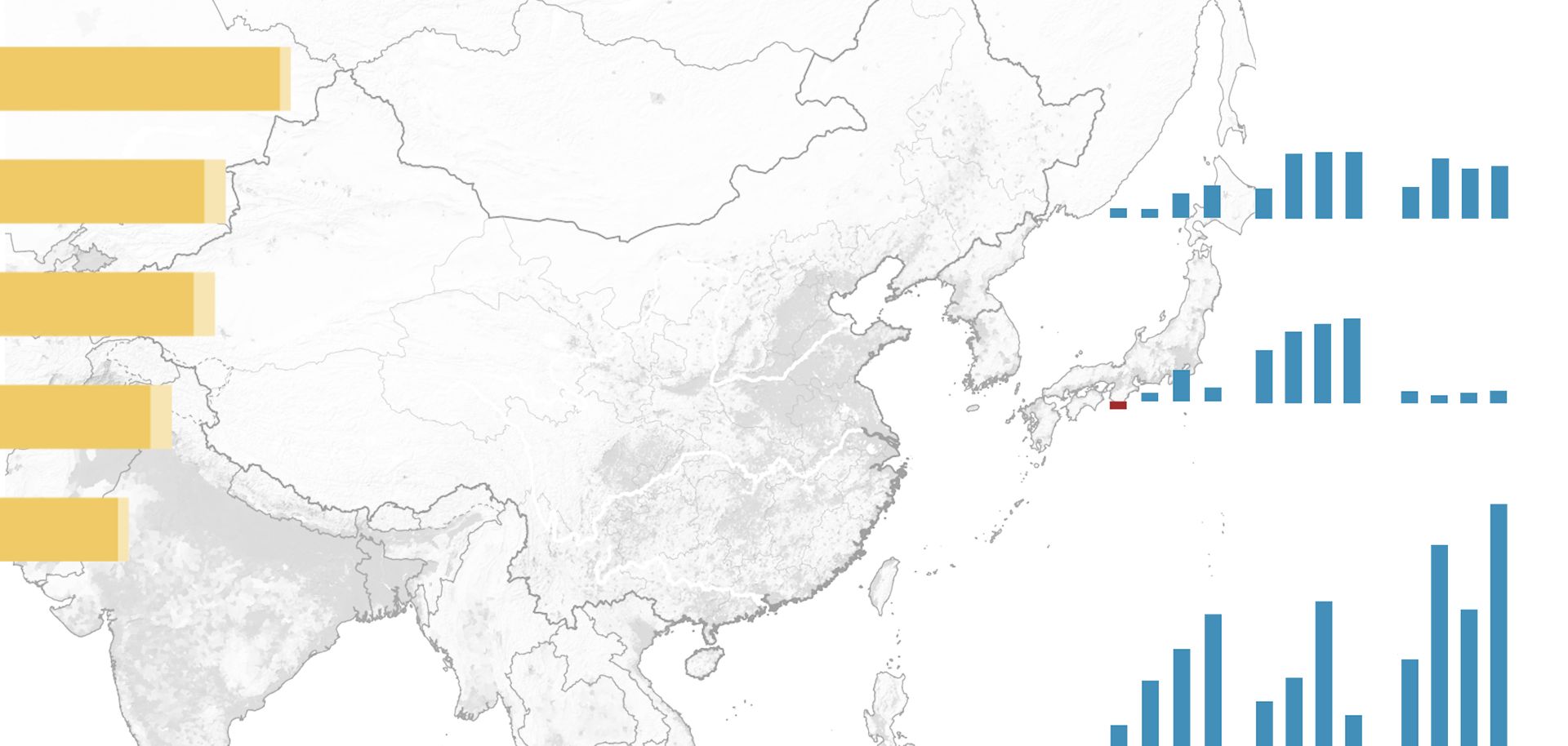
Why are China and Japan so interested in the East China Sea? Despite the hype surrounding its potentially lucrative hydrocarbon reserves, China and Japan's interests in the waters have little to do with energy. In fact, the complexity of the seabed's geographic features largely has made drilling prospects there — particularly in its eastern half — uncertain at best. Instead, the answer lies in strategy: The sea rests at the heart of the dispute over where Beijing and Tokyo believe their maritime boundaries should be drawn.
Japan has historically maintained that the median line evenly splitting the nautical distance between the two countries should delineate their border, with waters on the eastern side of that line belonging to Japan and waters on the western side belonging to China. (According to this demarcation, the Diaoyu/Senkaku Islands would indisputably fall on the Japanese side of the line.) Consequently, Tokyo's strategy in the East China Sea has been to enforce the median line boundary, keeping Chinese vessels at bay and building up its presence in the sea's eastern waters. But China, too, has an interest in the Diaoyu/Senkaku Islands, and for decades it has sought to expand its maritime claims eastward.
The imbalanced distribution of energy resources has only exacerbated tensions. For instance, the Xihu and Okinawa troughs — which fall on the Chinese and Japanese sides of the median line, respectively — are believed to be the areas of the sea with the greatest resource potential, though the latter has far less favorable operating conditions. As a result, the bulk of the resource development that has occurred so far in the East China Sea has been done by China, while Japan's attempts to explore the eastern seabed have been fairly infrequent. Japan's efforts to reach a deal on a joint exploration area with China have likewise faltered. All of the new Chinese drilling platforms that have sprung up over the past few months are located within 60 kilometers of the median line as well. Tokyo is becoming increasingly concerned that Beijing could use undersea exploration to extend its reach into Japanese waters, weakening the median line as the defining maritime barrier.
Japan's powerful coast guard retains the upper hand in the East China Sea, for now. But China is quickly closing the gap, and it may not be long before Beijing's naval forces outstrip Tokyo's. Moreover, it was recently disclosed that one of China's platforms is equipped with a military-grade surface radar system, improving China's awareness of activity in the East China Sea. This poses a serious problem for Tokyo: As development of the eastern side of the median line continues to lag, and as Beijing's maritime capabilities improve, Japan may have a harder time stopping China from pushing its territorial bounds eastward.



